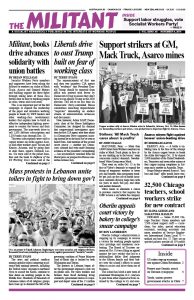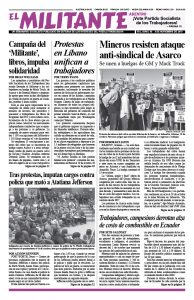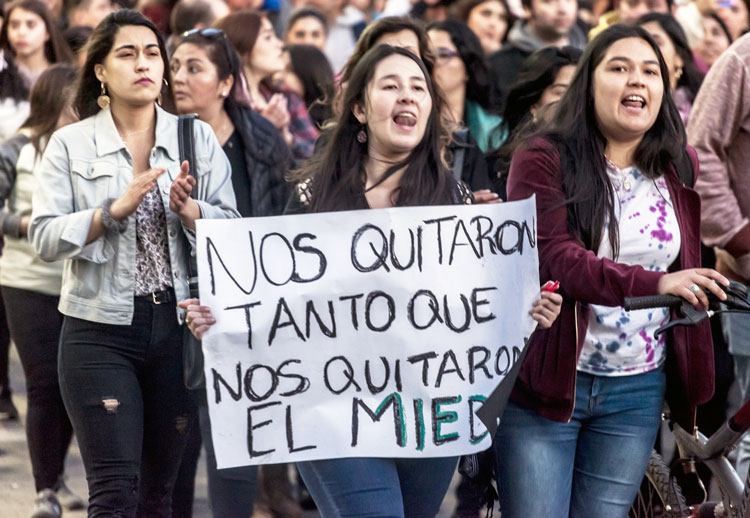Student protests, which began in Chile Oct. 5 over a government 30 pesos hike (41 cents) in public transit fares, grew into nationwide mass demonstrations by Oct. 19, paralyzing cities from Santiago, the capital, to Osorno, above. Placard reads: “They took away so much that they took away our fear.”
“The rise in the price of the metro was just the drop that led all this to spill over,” Constanza Uribe, 18, a university student, told the Wall Street Journal Oct. 21. Millions face a rising cost of living along with stagnant pay, and see Chile’s capitalist class living in ostentatious luxury.
Saying the country is “at war,” President Sebastián Piñera, a Harvard-educated billionaire capitalist, announced a state of emergency and curfew Oct. 20 even as he suspended the fare increase. He deployed more than 10,000 troops to back police firing water cannons, rubber bullets and tear gas trying to quell the demonstrations. Nearly 2,000 people have been arrested. Eleven people have been killed so far.
Members of Portuaria de Chile union announced they would shut down 20 ports Oct. 21 and join the demonstrations. Union workers at BHP’s Escondida copper mine, the world’s largest, walked off the job the next day, amid calls for a general strike.
“Something’s not right with this country and 14 year olds were the first ones to say so,” Patricio Tapia, president of Escondida Union No. 1, told Bloomberg News. “Now it’s workers’ turn to say enough is enough.”


